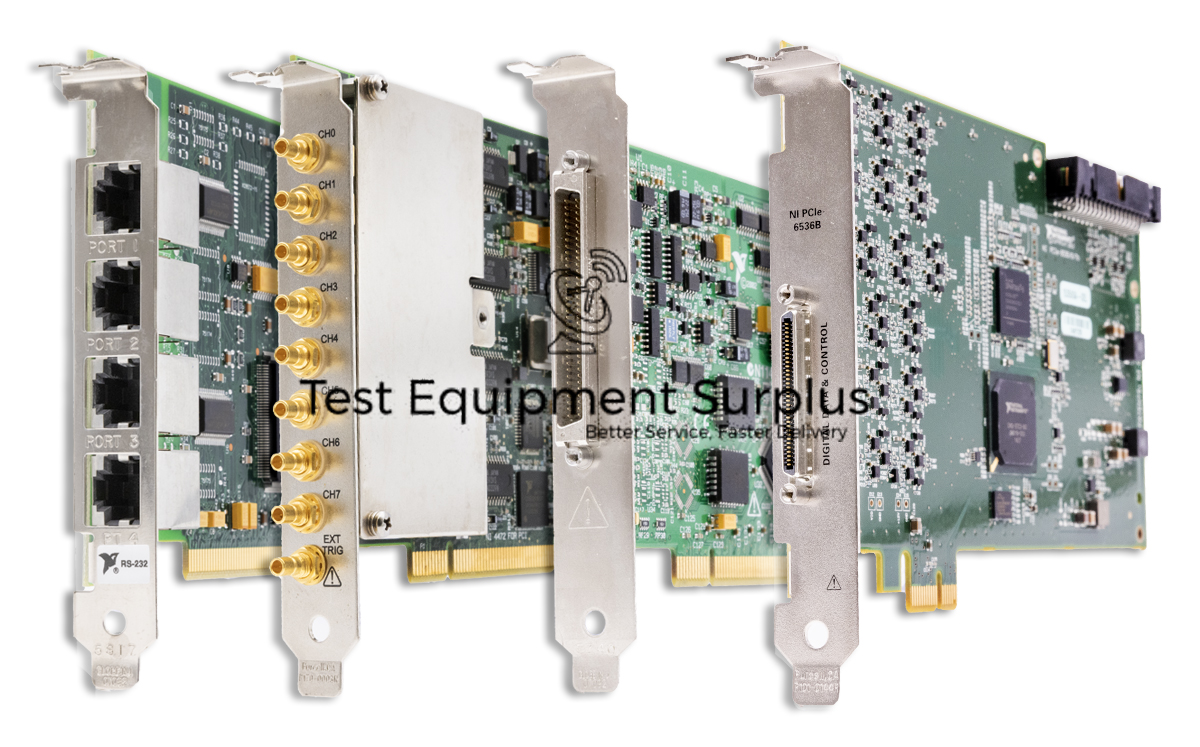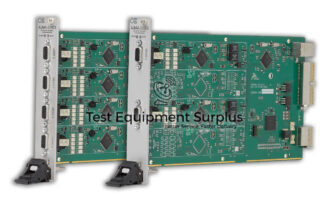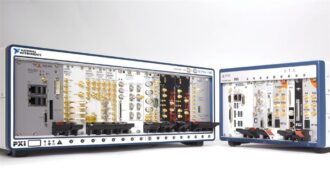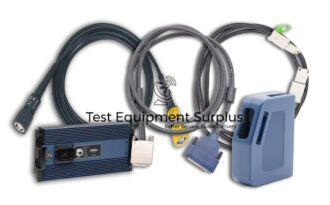Description
The National Instruments PCIe-8510 is a versatile Vehicle Multi-Protocol Interface Device that leverages PCI Express technology, designed to function as both a Local Interconnect Network (LIN) interface and a Controller Area Network (CAN) interface. It is ideal for demanding applications such as rapid control prototyping, automation control, and bus monitoring. Equipped with an NI-XNET DMA Engine, it ensures high performance by reducing CPU load during data transfer.
The device features 7 input/output trigger lines and 1 input/output clock line for flexible signal synchronization, while the 4-port version also offers 2 input/output sync connectors accessible on the front panel. It is TTL compatible, accommodating a range of input voltage limits from -0.5 V to 6.5 V. Users benefit from the hardware selectable NI-XNET interface port, which supports NI-XNET transceiver cables for CAN and LIN protocols.
With part numbers 785325-01 for the 2-port version and 785324-01 for the 4-port version, the device meets various power requirements, consuming 2.2 watts at +3.3 volts and 2.7 watts at +12 volts for the 2-port model, ensuring efficiency in power-sensitive environments.
| Specification | Details |
|---|---|
| Product Name | National Instruments PCIe-8510 Vehicle Multi-Protocol Interface Device |
| Part Numbers | 785325-01 (2-port), 785324-01 (4-port) |
| Interface Type | PCI Express |
| Functionality | Local Interconnect Network (LIN) interface, Controller Area Network (CAN) interface |
| Applications | Rapid control prototyping, Automation control, Bus monitoring, etc. |
| NI-XNET DMA Engine | Yes |
| Trigger Lines | 7 input/output |
| Clock Line | 1 input/output |
| Sync Connectors (4-port version only) | 2 input/output |
| Compatibility | TTL Compatible |
| Input Voltage Limits | 6.5 V (max), -0.5 V (min) |
| NI-XNET Interface Port | Hardware selectable |
| Supports | NI-XNET transceiver cables (CAN/LIN) |
| Power Requirement (2-port version) | 2.2 W at +3.3V, 2.7 W at +12V |
Question 1: What capabilities does the National Instruments PCIe-8510 offer to users requiring rapid prototyping and bus monitoring, and how does it support power efficiency in its different port versions?
Answer 1: The National Instruments PCIe-8510, as a Vehicle Multi-Protocol Interface Device, offers high data transfer performance through its NI-XNET DMA Engine, which minimizes CPU load, and features 7 input/output trigger lines and 1 input/output clock line for flexible signal synchronization, with additional 2 input/output sync connectors on the 4-port version, ensuring efficient and synchronized communication in automotive applications.
Question 2: What capabilities does the National Instruments PCIe-8510, with NI-XNET DMA Engine and hardware-selectable interface ports, provide for applications such as rapid control prototyping and bus monitoring, and how does its power consumption vary between the 2-port and 4-port versions?
Answer 2: The National Instruments PCIe-8510, equipped with an NI-XNET DMA Engine and hardware-selectable interface ports, offers high-performance LIN and CAN interfacing capabilities for rapid control prototyping and bus monitoring, while ensuring reduced CPU load during data transfers; the power consumption for the 2-port version is 2.2 watts at +3.3 volts and 2.7 watts at +12 volts, differing from the 4-port version which may vary due to additional ports but is not specified
Question 3: What are the capabilities and features of the National Instruments PCIe-8510 as a Vehicle Multi-Protocol Interface Device in terms of data transfer performance and signal synchronization?
Answer 3: The National Instruments PCIe-8510 offers high performance for bus monitoring and rapid control prototyping by utilizing an NI-XNET DMA Engine to minimize CPU load during data transfers and features such as 7 input/output trigger lines and 1 input/output clock line for advanced signal synchronization, along with hardware selectable NI-XNET interface ports and TTL compatibility to accommodate various voltage ranges, enhancing its capability to handle demanding applications efficiently.
Question 4: What advantages does the National Instruments PCIe-8510 offer for bus monitoring and rapid control prototyping in terms of performance and synchronization features?
Answer 4: The National Instruments PCIe-8510 offers features such as a high-performance NI-XNET DMA engine to reduce CPU load during data transfers, 7 input/output trigger lines and 1 input/output clock line for signal synchronization, hardware selectable NI-XNET interface ports, compatibility with NI-XNET transceiver cables for both CAN and LIN protocols, and it is TTL compatible with input voltage limits from -0.5 V to 6.5 V, making it suitable for applications in rapid control prototyping,
Question 5: What features does the National Instruments PCIe-8510, a vehicle multi-protocol interface device that functions as both a LIN and CAN interface, offer for applications like rapid control prototyping, automation control, and bus monitoring?
Answer 5: The National Instruments PCIe-8510 offers users capabilities for rapid prototyping and bus monitoring by functioning as both a LIN and CAN interface with high-performance data transfer via an NI-XNET DMA Engine, and it supports power efficiency with its 2-port version consuming 2.2 watts at +3.3 volts and 2.7 watts at +12 volts, catering to various power-sensitive environments.





